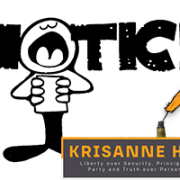Ruth Bader Ginsburg’s True Legacy- In Her Own Words
Ruth Bader Ginsburg’s True Legacy- In Her Own Words
by KrisAnne Hall, JD
Some ask can we identify a singular point that can cause the destruction of America. Looking toward U.S. Supreme Court Justice Ruth Bader Ginsburg, may give part of the answer to this question.
Al Hayat TV in Egypt interviewed Justice Ginsburg asking her for the advice she would give Egypt in writing the Constitution for their newly formed government. Her reply to this question gives insight into this her thoughts and understanding of the very Constitution she has given an oath to support and defend.
“I can’t speak as to what the Egyptian experience should be” she said, “because I am operating under a rather old Constitution, the United States in comparison to Egypt is a very new nation, yet we have the oldest Constitution still in force in the world…”










